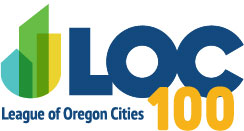LOC News
Framework Emerges for Transportation Package: TRIP 2025
After a 13-city road show, dozens of working group meetings, and several meetings of the Joint Committee on Transportation, a framework for the 2025 transportation package has been created. This legislation is referred to as the Oregon Transportation Reinvestment Package (TRIP), and its core elements are outlined below.
I. Focused Investment:
- 90% of the revenue is dedicated to operations and maintenance;
- $1.9 billion projected new revenue each biennium into the State Highway Fund (SHF); and
- The remaining revenue will go toward projects still needing funding.
II. Revenue Generation:
- $1.5 billion per biennium through increases to existing revenue streams:
- Fuel Tax: +20¢/gallon with staggered implementation:
- January 1, 2026: +8¢/gallon;
- January 1, 2028: +4¢/gallon;
- January 1, 2030: +4¢/gallon; and
- January 1, 2032: +4¢/gallon.
- Two-year Registration: +$66;
- Title: +$90; and
- Weight-Mile: +16.9%, conversion to diesel tax.
- Fuel Tax: +20¢/gallon with staggered implementation:
- $486 million per biennium through a one-time system use fee of 1% of the vehicle price at the time of purchase.
III. Distribution:
- More than $1.7 billion per biennium (existing revenue stream increases and nearly one-half of the one-time system use fee) will follow the regular distribution method in the State Highway Fund of 50/30/20 – approximately $850 million to the state / $510 million to counties / $340 million to cities (per biennium) to ensure all levels of government can maintain the safety of their infrastructure and stability of their revenue streams.
IV. Modern Transportation Funding:
- Index fuel tax to tie it to inflation to ensure the future solvency of the revenue stream;
- Phase in a mandatory road usage charge for light vehicles; and
- Phase in mandatory road usage charge for corporate delivery fleets.
V. Stewardship & Accountability:
- Restore Highway Cost Allocation balance per the Oregon Constitution;
- Reclassify diesel as a motor vehicle fuel to reduce fuel tax evasion and help alleviate administrative burdens on small company fuel sellers and fuel users;
- Simplify weight-mile rates to reduce weight-mile tax evasion and alleviate administrative burdens on trucking companies; and
- Ensure ODOT accountability by thoroughly reviewing ODOT’s existing accounting, budget, and project delivery processes and practices.
VI. Transit:
Additional funding to continue the investments from the previous transportation package that generated nearly $ 150 million annually:
- Maintain current transit service levels;
- Expand service areas and levels;
- Invest in youth pass expansion;
- Invest in rural transit development
- Expand veteran passes; and
- Increase the payroll tax. The current tax rate is one-tenth of one percent (0.1%). Increasing the payroll roll tax by 0.08% (for a total of 0.18%) will result in $ 268.6 million per biennium.
VII. Rail:
- Continued investment in Oregon’s rail infrastructure. Investments include:
- $17 million per biennium to maintain the new Amtrak service levels (including necessary upgraded equipment) and maintain, if not enhance, passenger rail experience and timetables;
- Increasing vehicle privilege tax (currently 0.5% of vehicle price) by 0.3% (for a total tax of 0.8%) to further Connect Oregon goals of investing in rail, aviation, and marine projects. Revenue estimates are $44.8 million per biennium; and
- Instituting a tire pollution tax of 3% of total tire purchase. Revenue projections are $50 million per biennium:
- 50% of revenue will go to rail operations; and
- 25% of revenue will go to wildlife crossings to help save the lives of drivers and wildlife.
VIII. Off-System Bike and Pedestrian Facilities:
Additional investment in existing and new trail systems for alternative modes of transportation. This includes:
- Investing in Oregon’s Community Paths program; and
- An increase in the bike tax of $9.50 per bike (total $24.50) would increase revenue by about $1 million per biennium. The current bike tax is $15 per bike with a sales price of $200 or more, collected at the point of sale.
More details of TRIP 2025 are available here.
The package, without question, is comprehensive, with investments in multimodal transportation alternatives covering a broad spectrum of interests. The revenue does not rely on traditional sources of revenue and has funding that, for the first time, includes indexing to keep up with inflation.
More details are expected, but the LOC will focus attention on TRIP 2025 for the remainder of the session.
Contact: Jim McCauley, Legislative Director, jmccauley@orcites.org
Last Updated 4/4/25

